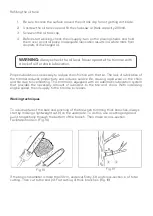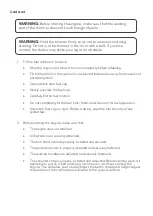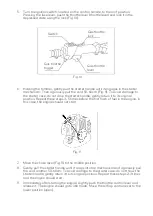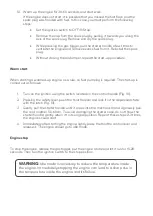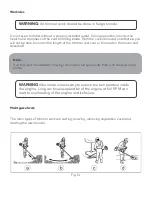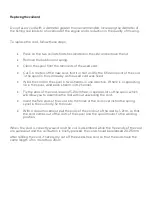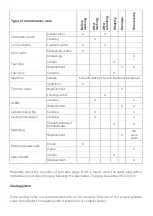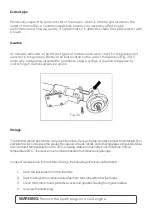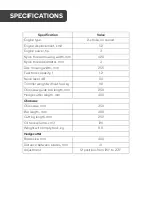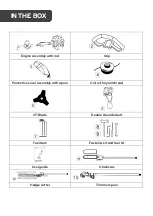
Cutting blade
The trimmer is equipped with a 3-blade metal cutter. A metal blade is used to mow thick
grass or weeds. To prevent kickback and destruction of the blade, do not use it to cut
bushes or young trees. It is not recommended to work with the metal blade if the site has
large irregularities, a bumpy surface, deep pits, or ditches, or near trees, shrubs, and hedges.
If the blade touches a hard obstacle, the trimmer will be thrown to the side with the risk of
injury. The collision of a rotating blade with stones and other extraneous hard objects in the
grass, as a rule, leads to the ejection of their fragments in an unpredictable direction with
great speed, which can lead to serious injuries.
If you experience increased vibration on the blade during operation, immediately stop the
engine and check the installation and integrity of the knife, otherwise, this may cause the
trimmer to break.
After work, clean the trimmer from the remnants of the mowed grass; especially carefully
clean the wound grass from the blade axis. When cleaning the axle in some cases it is
required to remove the blade. Note that the axle has a left-hand thread and when removing
the blade, you must rotate the nut clockwise, locking the axle as indicated in the "Cutting
blade installation" section of this manual above.
WARNING:
If the blade hits an obstacle, immediately stop the engine,
and check the blade for damage.
WARNING:
To avoid unbalancing the cutter, it is not recommended
to sharpen the blades in a domestic environment without special
equipment. If the blade is blunt or the cutting edges are damaged,
replace the cutter with a new one.
WARNING:
Never work with a blunt blade, or a blade that has cracks,
chips, or different length blades. Never use a blade fixed with worn or
damaged nuts or washers. A metal blade rotating with great frequency
that spontaneously disconnects from the trimmer presents a serious
hazard.




